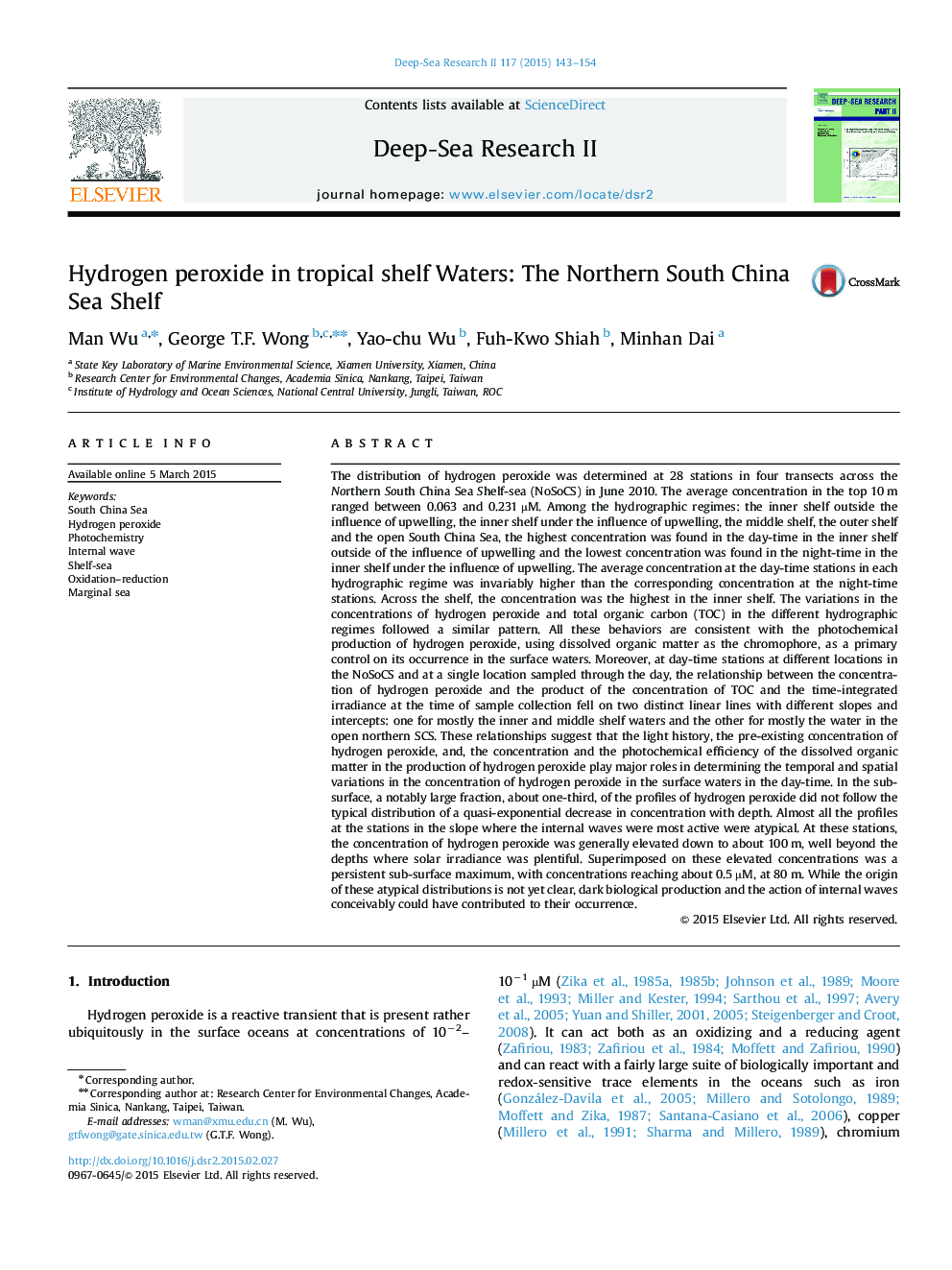| کد مقاله | کد نشریه | سال انتشار | مقاله انگلیسی | نسخه تمام متن |
|---|---|---|---|---|
| 4536242 | 1626423 | 2015 | 12 صفحه PDF | دانلود رایگان |
The distribution of hydrogen peroxide was determined at 28 stations in four transects across the Northern South China Sea Shelf-sea (NoSoCS) in June 2010. The average concentration in the top 10 m ranged between 0.063 and 0.231 µM. Among the hydrographic regimes: the inner shelf outside the influence of upwelling, the inner shelf under the influence of upwelling, the middle shelf, the outer shelf and the open South China Sea, the highest concentration was found in the day-time in the inner shelf outside of the influence of upwelling and the lowest concentration was found in the night-time in the inner shelf under the influence of upwelling. The average concentration at the day-time stations in each hydrographic regime was invariably higher than the corresponding concentration at the night-time stations. Across the shelf, the concentration was the highest in the inner shelf. The variations in the concentrations of hydrogen peroxide and total organic carbon (TOC) in the different hydrographic regimes followed a similar pattern. All these behaviors are consistent with the photochemical production of hydrogen peroxide, using dissolved organic matter as the chromophore, as a primary control on its occurrence in the surface waters. Moreover, at day-time stations at different locations in the NoSoCS and at a single location sampled through the day, the relationship between the concentration of hydrogen peroxide and the product of the concentration of TOC and the time-integrated irradiance at the time of sample collection fell on two distinct linear lines with different slopes and intercepts: one for mostly the inner and middle shelf waters and the other for mostly the water in the open northern SCS. These relationships suggest that the light history, the pre-existing concentration of hydrogen peroxide, and, the concentration and the photochemical efficiency of the dissolved organic matter in the production of hydrogen peroxide play major roles in determining the temporal and spatial variations in the concentration of hydrogen peroxide in the surface waters in the day-time. In the sub-surface, a notably large fraction, about one-third, of the profiles of hydrogen peroxide did not follow the typical distribution of a quasi-exponential decrease in concentration with depth. Almost all the profiles at the stations in the slope where the internal waves were most active were atypical. At these stations, the concentration of hydrogen peroxide was generally elevated down to about 100 m, well beyond the depths where solar irradiance was plentiful. Superimposed on these elevated concentrations was a persistent sub-surface maximum, with concentrations reaching about 0.5 µM, at 80 m. While the origin of these atypical distributions is not yet clear, dark biological production and the action of internal waves conceivably could have contributed to their occurrence.
Journal: Deep Sea Research Part II: Topical Studies in Oceanography - Volume 117, July 2015, Pages 143–154
